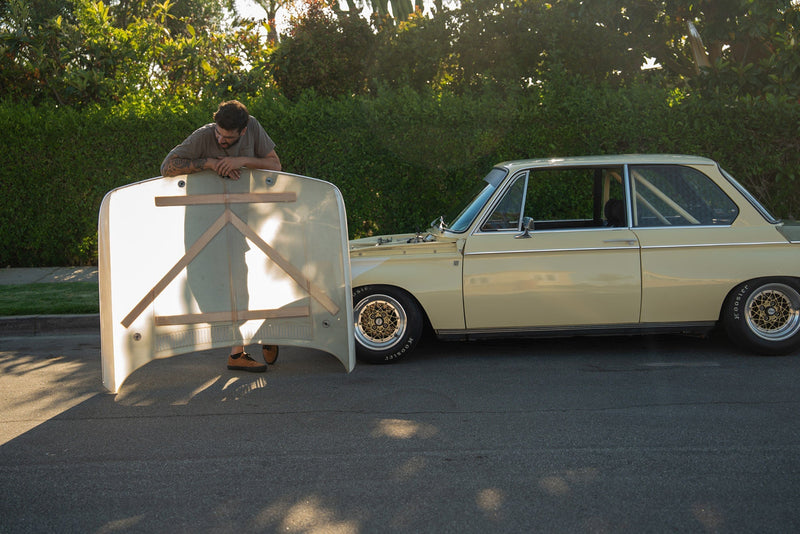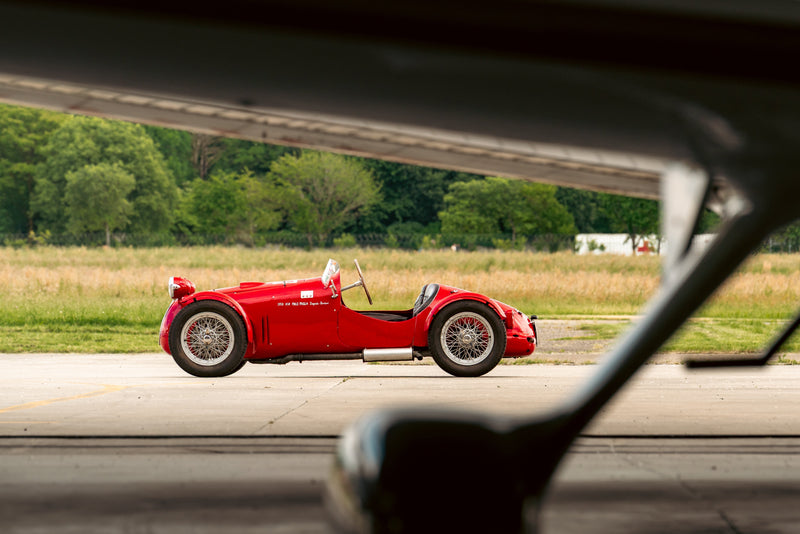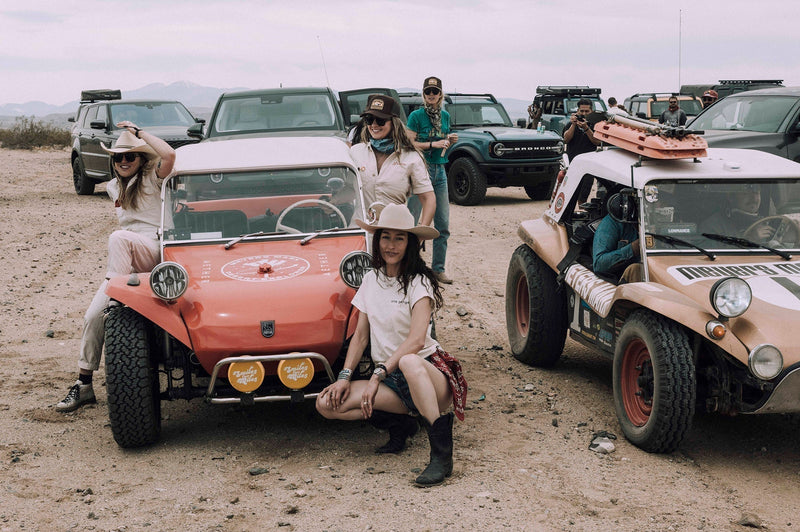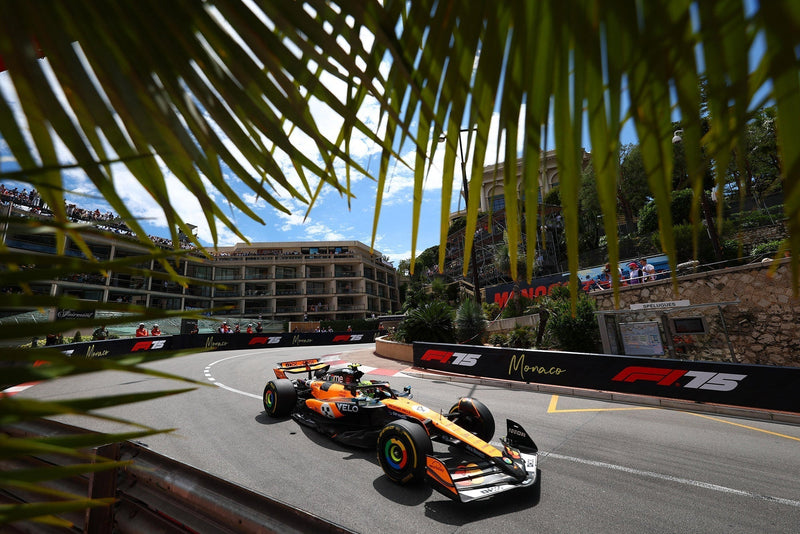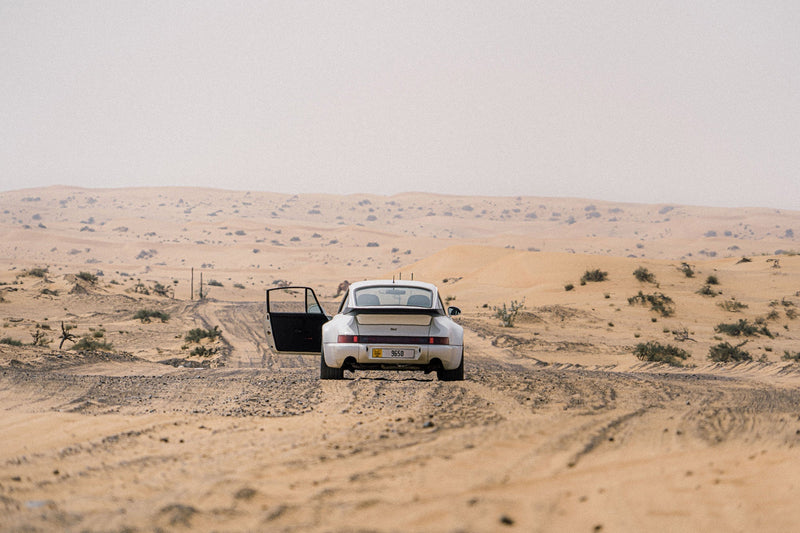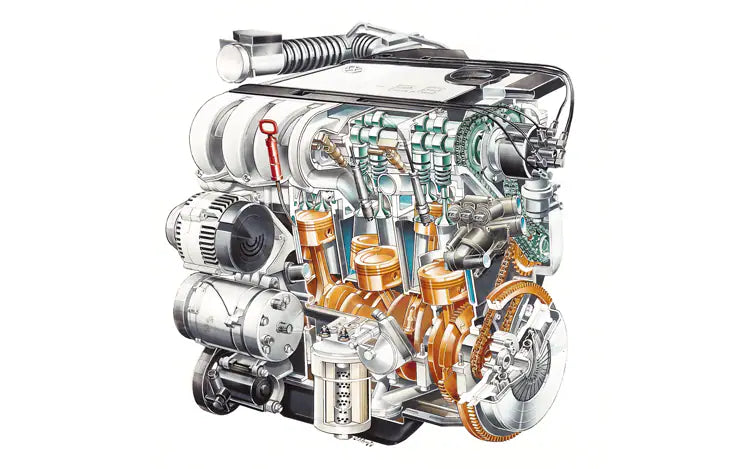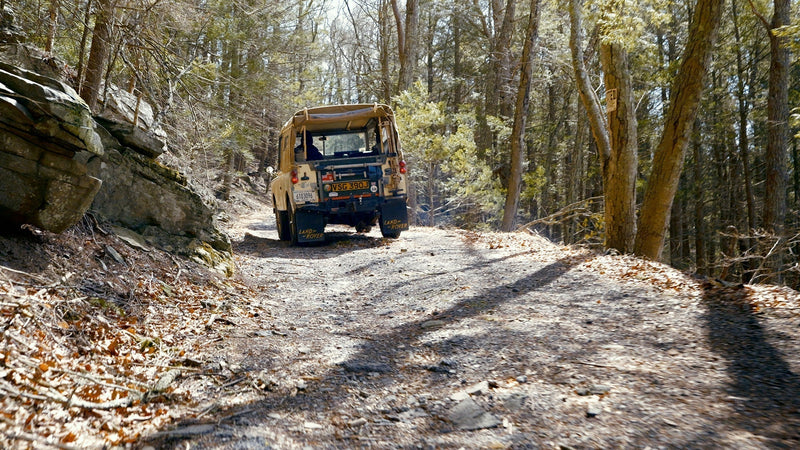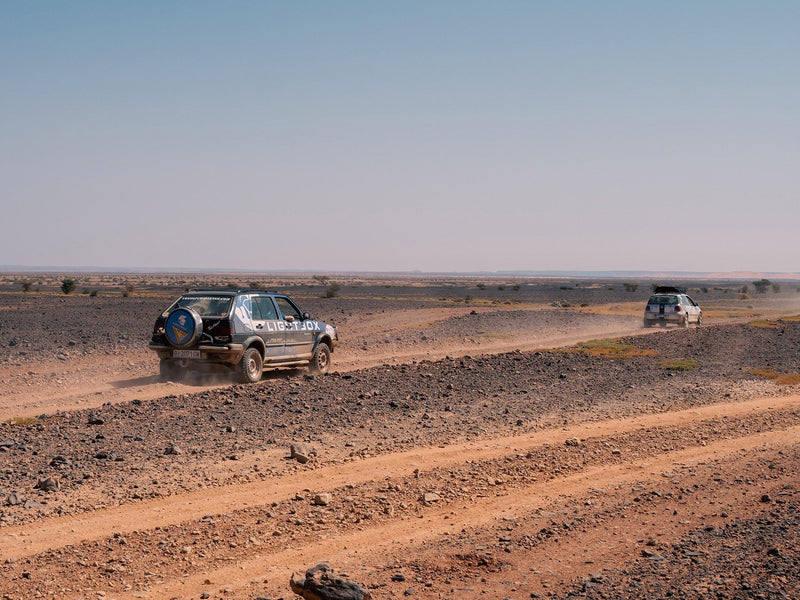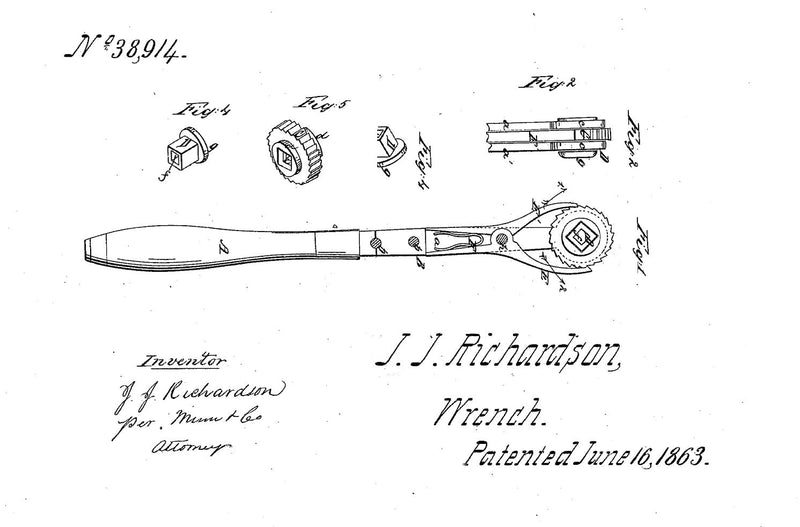Naturally, I had to ask how many miles he had put on this beautifully patina’d British coupe. Laughing, Mr. King informed me that the car, believe it or not, has incredibly carried him more than 500,000 miles.
Owning a single car for 50 years is a long haul commitment, to say nothing of that car being of the tiny vintage sports-oriented variety, so we sat down with Mr. King and talked to him about this journey of automotive fidelity.

Andrew Golseth: Skip, what were you driving before the Elan?
Skip King: I had a Ford Mustang. When I first joined the Army, I didn't have a vehicle until I went to Officer Candidate School. Just before I went off to flight school, I bought a brand new ‘68 Mustang. It wasn’t a fastback, just the regular 289 coupe with the four-speed on the floor. I had that for a year.
AG: Then the Lotus?
SK: Yeah, I bought the Lotus Elan S4 SE FHC brand new. I think it had about thirty miles on it when I picked it up. I bought it from a guy named Bob Challman, who, at the time, was the southwestern distributor for Lotus Cars in the states. He had a dealership in Manhattan Beach. I even remember the address: 2301 Sepulveda Boulevard.
I had known Bob for years because I used to pedal my bicycle down there when I was about 14-years-old and hang around the shop. I never could figure out why he didn't throw me out, but he took a liking to me. I used to go to the racetrack with Bob to watch him drive his Lotus 30— mostly to Riverside and a couple times at the old Thunderbird Raceway in Las Vegas.
Through going with Bob to these races, I was introduced to Jim Clark, Phil Hill, Graham Hill, Bob Bondurant, and Steve McQueen. Through him, I was able to meet all these people; I didn't buy a Lotus because it was a cool thing to do at the time, I did it because I had an association with Bob Challman and his Lotus.
I think a lot of why I kept the car is because it just reminds me of this relationship. It's part of my history. It's part of what I grew up doing. Bob Challman was almost like a second father to me for a number of years. He even tried to help me get into the Air Force Academy, but I ended up joining the Army.
And so when I got back from my time in Vietnam, I wanted to buy an Elan from Bob, and this one was the only one he had on the lot. It was originally a banana yellow color; not my first choice, but like I said it was that or nothing. I bought it at dealer's cost and Bob said, "This time, it's on me. Next time, you get to pay," but there never was a next time. Apparently I never needed to buy another one. (laughs)
Bob passed away about 20 years ago. He had that dealership from ‘61 until I think about 1970. When he sold it, it continued as a Lotus dealer for a time but under another name. The building and everything is still there, but now the front part is an Enterprise Rental Agency and the back is a Toyota garage.


AG: How did you land on an Elan as your choice of car after coming home?
SK: Well, I had wanted a Lotus for a long time, but when I got back from Vietnam I got married and my wife and I were going to buy a regular car because we figured the Mustang was just a little too small.
It was actually a friend of mine who knew I really wanted a Lotus who said, “You know. If you don’t do it now, you’re never going to do it.” He was probably right, so instead of buying a regular car, we bought the Lotus and it’s been with me ever since.
AG: Regular cars are overrated. What year was this?
SK : That was around October 1970. I was still in the Army, but at that point I was back in California. My wife and I got married in California, picked up the Lotus, and then I was stationed in Alabama. So, we bought the car and then loaded it up with what little stuff we had and made our way across the country. The first thing we did was drive it across the country from California to Alabama!
AG: I can’t imagine there were too many Lotus Elans in Alabama.
SK: At that time, it probably was the only one in the state. After two years in Alabama, I was reassigned to Oklahoma. There was actually another guy that had an Elan in Oklahoma, so there were two of us there. Come to think of it, there was another guy, my next-door neighbor, who also had a 289 Cobra.
AG: Officer housing tends to have the nicer cars on installations.
SK: Yeah, all the “rich” Captains back then. (laughs) We all had the fancy cars.


AG: How long did you daily drive the Elan?
SK: I daily drove the Lotus up until about six or seven years ago. Drove it every day for about 40 years. It's got half a million miles on it, easily. I haven’t kept exact mileage but I know from my old commutes that it has at least that much on it.
AG: That’s got to be some kind of Elan world record, no? It’s certainly making a counter argument for the “British cars are unreliable” adage.
SK: It really has been a tremendously reliable car. It's stranded me a couple times but thankfully it's never left me out in the boondocks, other than the time I ran out of gas in the middle of the night in rural central Florida, but that was more my fault than the car’s.
It’s funny, I went up with a friend of mine to Laguna Seca for a Golden Gate Lotus Club gathering about 10 years ago. We were sitting in on a little meeting and a guy that was there, a real Lotus guru, started talking about all the problems that you can expect to experience with Lotuses, particularly the Elan.
"With so many miles, you can expect to have problems with this and that, etc." Baffled, I finally raised my hand and said, "You know. The way you talk about the Elan, my car should have turned to dust about 300,000 miles ago because it's got half a million on it now." People just looked at me like, "You're joking."
I found the thing that fails the most is the gaiter—the little rubber thing around the gearshift. It breaks apart easily. I've probably replaced that at least 20 times.
Other than that, the original muffler lasted 25 years and the only reason I got rid of it was because it was rusty and ugly—i t was still working. I actually drove it from Oklahoma back to Alabama on, essentially, three cylinders because it had a burnt exhaust valve. It was fine. It didn't accelerate worth a damn, but once you got it up to speed it would get enough compression to where the cylinder would carry itself and it would just cruise along nicely at 70.
I've had a connecting rod bolt break, but that fortunately happened at idle. It put a gouge in the crankcase, but it didn't break the block. I had the typical distributor problems. I’ve had a coil go out and a condenser go out, but honestly, for the mileage its carried me, it’s been incredibly solid.



AG: Tell me about your military career. I assume by the “ATKHEL” vanity plate that you flew choppers?
SK: I got drafted. Well, I got my notice anyway, and I didn't want to be an infantryman, so I went down and enlisted. I was trained as a helicopter mechanic. I started out as a crew chief on the old Hueys. Because of the organization I was in, I got to sit up front a number of times and I always thought, "This is pretty cool."
I liked aviation and flying and I got my initial private pilot's license while I was in the Army stationed in Colorado. They had a flying club at the airfield and that's where I got my pilot's license. This was just a private pilot, fixed-wing, license, for flying things like a Cessna 150 or 172. After that though, I decided I wanted to be a pilot for the military. This is 1968, we're right in the middle of Vietnam and I applied to Officer Candidate School and was accepted. I went to Fort Sill, Oklahoma in March of 1968; OCS was a six-month course. Initially, I was commissioned as a Lieutenant in the US Army Artillery.
From there, I went directly to flight school. That's when I bought the Mustang, in the summer of ‘68. After graduating flight school, I went to Chinook transition, which is the big tandem rotor helicopter that the Army still uses.
AG: I swear they’re never going to retire those.
SK: Nope. (laughs) There's a Chinook out there used by the Special Operations guys. The 160th. It's got a bunch of cool stuff on it. Plus, it's capable of in-flight refueling and everything—totally modernized.
That very helicopter is the same bird I flew in Vietnam in 1969. It's been rebuilt at least twice. That's what they do. They save about 10 million dollars per airframe by using the old airframes, stripping them down, modifying them, and putting them back together.
AG: Sort of like a Lotus Elan, right?
SK: I suppose so!






AG: So, you flew Chinooks in Vietnam?
AG: In October ‘70, I went to Vietnam and flew Chinooks for my entire tour. A while later, I went to Korea in ‘76 and did another tour in Chinooks. That’s when things got kind of weird; I came back to California to Fort Ord in Monterey and I was supposed to command a platoon of Chinooks that were going to be reassigned there, but that never happened.
AG: So, what’d the Army do with you?
SK: Ultimately, I ended up flying Cobras instead, which is odd because normally you don't transition from cargo helicopters to attack helicopters. So I flew Cobras for a few years, and then ended up getting selected to do the operational tests on the then-new Apache helicopters, which I spent my last 8 years in the service flying.
Because of that, when I retired, I was offered a job by McDonnell-Douglas, so when I retired from the Army out of Alabama in ‘86, we moved to Arizona, Lotus in tow.
I did that for about 10 years before I left and came back to California. I’ve been back here for about 20 years with the same Lotus still with me.



AG: Getting drafted doesn’t normally turn into a 20 year military aviation career of flying three different airframes.
SK: Yeah, I always joke when people ask about my military service, I say, “Yeah. I got drafted. They said two years and I misunderstood and thought they said '20' and being a good soldier, I stuck it out.”
AG: That’s great. So, I take it you enjoyed your time in service?
SK: Yeah, all 20 years, 2 months, 29 days, 4 hours, and 37 seconds of it. (laughs) Not that I keep track of that stuff. I did a lot of fun things. I got to go to a lot of fun places and a couple of not-so-fun places, but it was a good career. I certainly do not regret that part of my life.
AG: Certainly. And the Lotus was there the whole time, just about.
SK : Yeah. The Lotus was there pretty much the whole time.
AG: I assume you’ve fixed everything at least twice over the 500,000-plus miles? Have you done all the maintenance yourself?
SK: With the exception of the machine work on the engine, I’ve pretty much done everything on it. I even repainted it myself, though I’m not sure I care to let anyone else know that, given the looks of the paint job today!
I’ve redone the interior a couple times too, and my latest effort was redoing all the suspension. The block has been redone within the last couple years. At this point, essentially, powertrain and suspension-wise, it's where I want it to be. If I get around to it, I’d eventually like to have the bodywork done and have it repainted, but it's not on my list of priorities at the moment.


AG: Personally, I think it looks incredible—I wouldn’t change a thing. When you bought the Lotus, you said you had always wanted one, but did you have this grand idea that you'd keep it forever?
SK: Not at all, it was not planned. It was just something that was never considered. I wasn't even going to buy it initially. So, once I got it, it just sort of stayed with me. I never had any reason to sell it.
AG: Sort of like turning a draft into a career: you just sort of made it work. After such a long ownership, it’s probably going to be hard to boil it down, but is there any specific thing about the car that stands out to you?
SK: It’s always been a car that people look at. Most don't have any idea what it is but they think it's cool looking all the same. I've had people pull up alongside me and start conversations, even pull off to the side of the road after the light changes because they want to look at the car and take pictures and ask questions, which I’ve always enjoyed.
AG: What makes it so special to drive?
SK: You know I think the biggest thing about it… I'm not quite sure how to describe it. It's just, when you get in the car, which is certainly harder for me nowadays than it used to be, it is honestly just as fun today as it was the first day I ever drove it.
I have a BMW now, which I drive like an old man in. But in the Lotus, I don't. I don't get too crazy with it of course, but when I get in the Elan, even after a half-million miles behind the wheel, it's still fun to drive. It still kicks butt performance-wise, even in stock form. I’ll be 70 next month and I don’t have any plans of letting it go. They can either bury me in it or the kids can argue over who wants it!













































